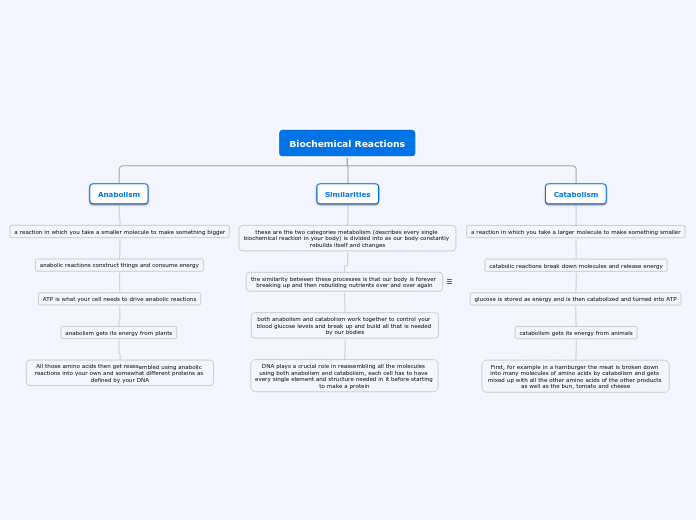av Anastasiya Dyadchenko för 4 årar sedan
435
Biochemical Reactions

av Anastasiya Dyadchenko för 4 årar sedan
435

Mer av detta
glucose is stored as energy and is then catabolized and turned into ATP
catabolism gets its energy from animals
First, for example in a hamburger the meat is broken down into many molecules of amino acids by catabolism and gets mixed up with all the other amino acids of the other products as well as the bun, tomato and cheese
these nutrients come in 6 major groups which help in all the processes that build and break up molecules:
both anabolism and catabolism work together to control your blood glucose levels and break up and build all that is needed by our bodies
DNA plays a crucial role in reassembling all the molecules using both anabolism and catabolism, each cell has to have every single element and structure needed in it before starting to make a protein
ATP is what your cell needs to drive anabolic reactions
anabolism gets its energy from plants
All those amino acids then get reassembled using anabolic reactions into your own and somewhat different proteins as defined by your DNA